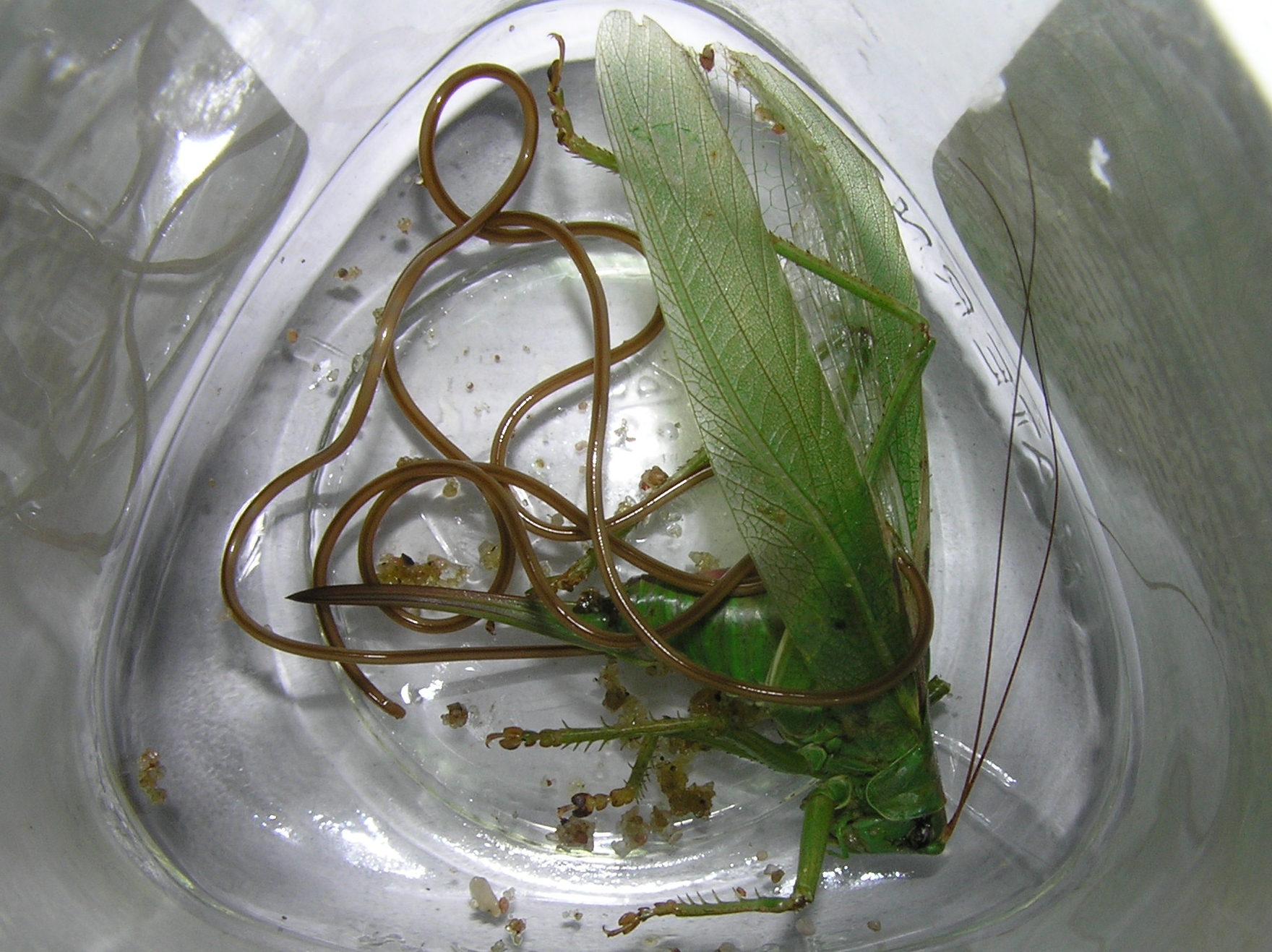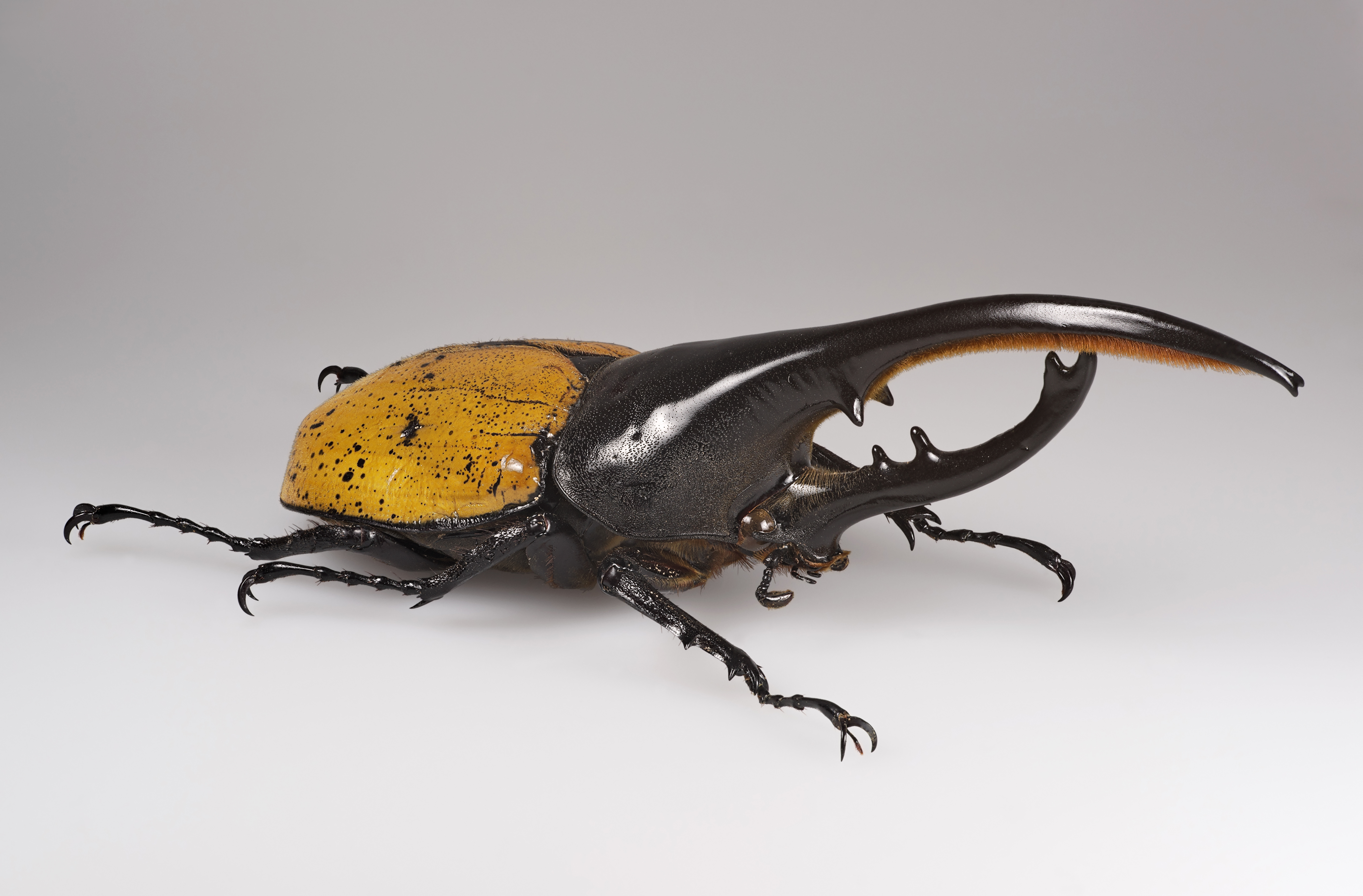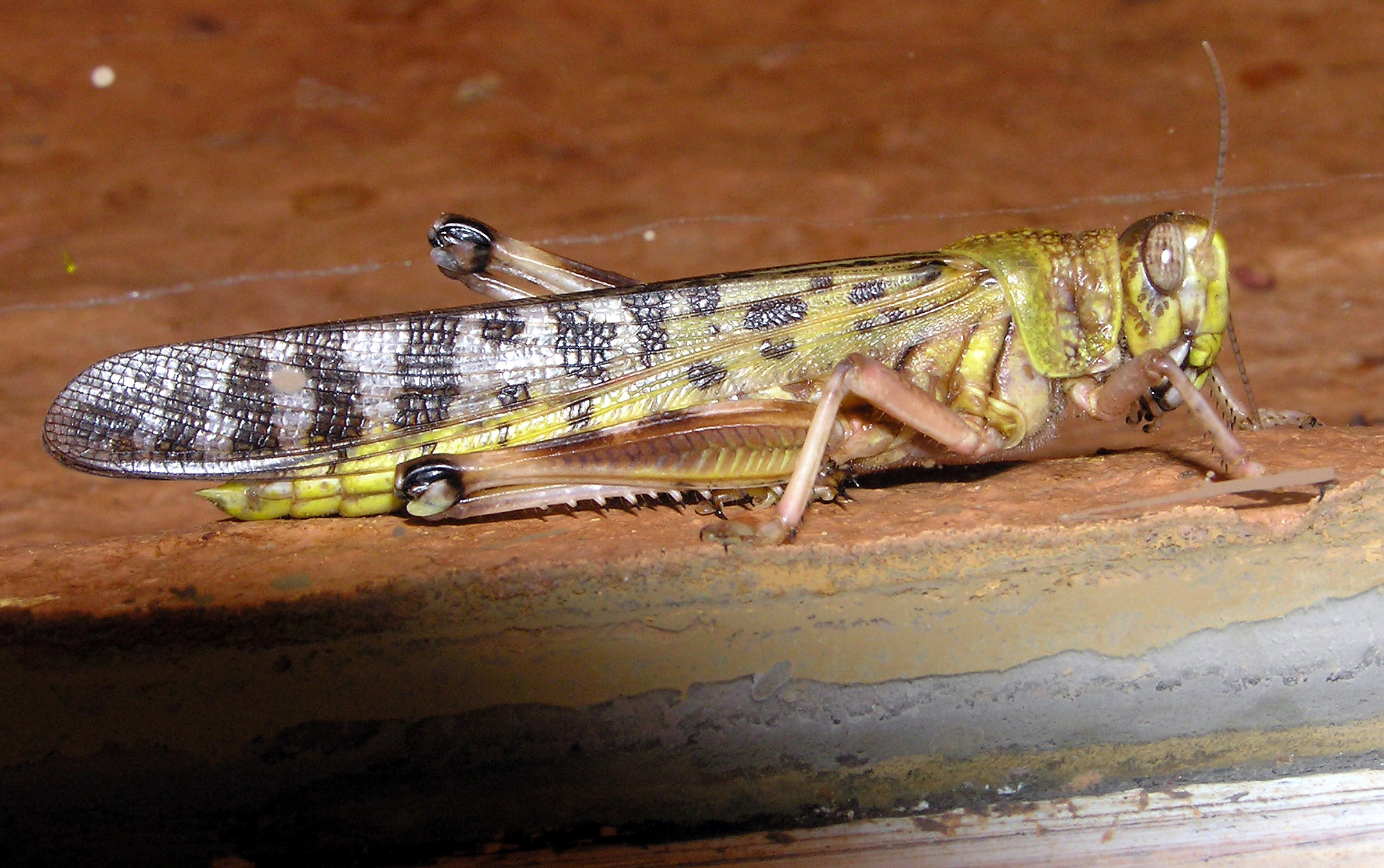|
Mermis Nigrescens
''Mermis nigrescens'' is a species of nematode known commonly as the grasshopper nematode.Capinera, JGrasshopper nematode, ''Mermis nigrescens''.EENY-500. University of Florida, IFAS. 2011.Cranshaw, WColorado State University Extension. 2008. Revised 2013. It is distributed in the Americas, Europe, and Asia. It occurs in Tasmania, but it has not been observed on mainland Australia. It has been rarely observed in Africa. It is a parasite of insects, especially grasshoppers. Description This is a very large nematode, the male about 4 to 6 centimetres long and the female known to exceed 20 centimetres.''Mermis nigrescens''. Nematology. University of Nebraska, Lincoln. The size is unusual for entomopathogenic nematodes, which are generally almost microscopic. The body is pale brown, and the |
Félix Dujardin
Félix Dujardin (5 April 1801 – 8 April 1860) was a French biologist born in Tours. He is remembered for his research on protozoans and other invertebrates. Biography In 1840 he was appointed professor of geology and mineralogy at the University of Toulouse, and during the following year was a professor of zoology and botany at Rennes. In regard to his educational background, Dujardin was largely self-taught, the son of a watchmaker. Dujardin worked with microscopic animal life, and in 1834 proposed that a new group of one-celled organisms be called Rhizopoda. He denied naturalist Christian Gottfried Ehrenberg's theory that microscopic organisms were "complete organisms" similar to higher animals, specifically noting that they had specialized structures unique to single-celled organisms, which meant that foraminifera he was studying was not, as his contemporaries believed it to be, a mollusk. In addition to his studies of microscopic life, he did extensive research on in ... [...More Info...] [...Related Items...] OR: [Wikipedia] [Google] [Baidu] |
Mermis Nigrescens On Tettigonia Viridissima Beentree
''Mermis'' is a genus of nematodes belonging to the family Mermithidae. The genus has almost cosmopolitan distribution. Species At least 11 species currently belong to the genus: * ''Mermis athysanota'' * ''Mermis changodudus'' * ''Mermis gigantea'' * ''Mermis kenyensis'' * ''Mermis mirabilis'' * ''Mermis nigrescens'' * ''Mermis papillus ''Mermis'' is a genus of nematodes belonging to the family Mermithidae. The genus has almost cosmopolitan distribution. Species At least 11 species currently belong to the genus: * ''Mermis athysanota'' * ''Mermis changodudus'' * ''Mermis g ...'' * '' Mermis paranigrescens'' * '' Mermis quirindiensis'' * '' Mermis savaiiensis'' * '' Mermis xianensis'' References {{Taxonbar, from=Q17598469 Mermithidae ... [...More Info...] [...Related Items...] OR: [Wikipedia] [Google] [Baidu] |
Prevalence
In epidemiology, prevalence is the proportion of a particular population found to be affected by a medical condition (typically a disease or a risk factor such as smoking or seatbelt use) at a specific time. It is derived by comparing the number of people found to have the condition with the total number of people studied and is usually expressed as a fraction, a percentage, or the number of cases per 10,000 or 100,000 people. Prevalence is most often used in questionnaire studies. Difference between prevalence and incidence Prevalence is the number of disease cases ''present ''in a particular population at a given time, whereas incidence is the number of new cases that ''develop '' during a specified time period. Prevalence answers "How many people have this disease right now?" or "How many people have had this disease during this time period?". Incidence answers "How many people acquired the disease uring a specified time period". However, mathematically, prevalence is propor ... [...More Info...] [...Related Items...] OR: [Wikipedia] [Google] [Baidu] |
Forficula Auricularia
''Forficula auricularia'', the common earwig or European earwig, is an omnivorous insect in the family Forficulidae. The European earwig survives in a variety of environments and is a common household insect in North America. The name ''earwig'' comes from the appearance of the hindwings, which are unique and distinctive among insects, and resemble a human ear when unfolded; the species name of the common earwig, ''auricularia'', is a specific reference to this feature. They are considered a household pest because of their tendency to invade crevices in homes and consume pantry foods, and may act either as a pest or as a beneficial species depending on the circumstances (see below). ''Forficula auricularia'' is reddish-brown in color, with a flattened and elongate body, and slender, beaded antennae. An obvious feature of earwigs is the pair of 'pincers' or forceps at the tip of the flexible abdomen. Both sexes have these pincers; in males they are large and very curved, whereas in ... [...More Info...] [...Related Items...] OR: [Wikipedia] [Google] [Baidu] |
Arthropod Cuticle
The cuticle forms the major part of the integument of the Arthropoda. It includes most of the material of the exoskeleton of the insects, Crustacea, Arachnida, and Myriapoda. Morphology In arthropods, the integument, the external "skin", or "shell", is the product of a single layer of ectodermal epithelium. That layer is attached to the external or distal surface of the deepest layer, the non-cellular internal membrane of the integument. That non-cellular membrane is called the basement membrane. The layer of epithelium on the basement membrane produces the cuticle, which begins as a tough, flexible layer of chitin. Such thin, flexible chitin is the major structural part of the integument where flexibility is necessary, such as in bodily parts that must stretch to contain accumulated liquids, or that form joints between rigid parts of the exoskeleton. In other parts of the cuticle the function of the integument demands more rigid materials, such as armoured regions or the b ... [...More Info...] [...Related Items...] OR: [Wikipedia] [Google] [Baidu] |
Glucose
Glucose is a simple sugar with the molecular formula . Glucose is overall the most abundant monosaccharide, a subcategory of carbohydrates. Glucose is mainly made by plants and most algae during photosynthesis from water and carbon dioxide, using energy from sunlight, where it is used to make cellulose in cell walls, the most abundant carbohydrate in the world. In energy metabolism, glucose is the most important source of energy in all organisms. Glucose for metabolism is stored as a polymer, in plants mainly as starch and amylopectin, and in animals as glycogen. Glucose circulates in the blood of animals as blood sugar. The naturally occurring form of glucose is -glucose, while -glucose is produced synthetically in comparatively small amounts and is less biologically active. Glucose is a monosaccharide containing six carbon atoms and an aldehyde group, and is therefore an aldohexose. The glucose molecule can exist in an open-chain (acyclic) as well as ring (cyclic) form. ... [...More Info...] [...Related Items...] OR: [Wikipedia] [Google] [Baidu] |
Circulatory System
The blood circulatory system is a system of organs that includes the heart, blood vessels, and blood which is circulated throughout the entire body of a human or other vertebrate. It includes the cardiovascular system, or vascular system, that consists of the heart and blood vessels (from Greek ''kardia'' meaning ''heart'', and from Latin ''vascula'' meaning ''vessels''). The circulatory system has two divisions, a systemic circulation or circuit, and a pulmonary circulation or circuit. Some sources use the terms ''cardiovascular system'' and ''vascular system'' interchangeably with the ''circulatory system''. The network of blood vessels are the great vessels of the heart including large elastic arteries, and large veins; other arteries, smaller arterioles, capillaries that join with venules (small veins), and other veins. The circulatory system is closed in vertebrates, which means that the blood never leaves the network of blood vessels. Some invertebrates such as ... [...More Info...] [...Related Items...] OR: [Wikipedia] [Google] [Baidu] |
Stylet (anatomy)
A stylet is a hard, sharp, anatomical structure found in some invertebrates. For example, the word ''stylet'' or stomatostyle is used for the primitive piercing mouthparts of some nematodes and some nemerteans. In these groups the stylet is a hardened protrusible opening to the stomach. These stylets are adapted for the piercing of cell walls and usually function by providing the operative organism with access to the nutrients contained within the prey cell. The mouthparts of tardigrades, diptera and aphids are also called stylets. In octopodes An octopus ( : octopuses or octopodes, see below for variants) is a soft-bodied, eight- limbed mollusc of the order Octopoda (, ). The order consists of some 300 species and is grouped within the class Cephalopoda with squids, cuttlefish, ..., the stylets are internal, needle-like bent rods within the mantle, the vestigial remnants of an external shell. References Nematode anatomy {{Animal-anatomy-stub ... [...More Info...] [...Related Items...] OR: [Wikipedia] [Google] [Baidu] |
Desert Locust
The desert locust (''Schistocerca gregaria'') is a species of locust, a periodically swarming, short-horned grasshopper in the family Acrididae. They are found primarily in the deserts and dry areas of northern and eastern Africa, Arabia, and southwest Asia. During population surge years, they may extend north into parts of western Spain and southern Italy, south into Eastern Africa, and east in northern India. The desert locust shows periodic changes in its body form and can change in response to environmental conditions, over several generations, from a solitary, shorter-winged, highly fecund, non-migratory form to a gregarious, long-winged, and migratory phase in which they may travel long distances into new areas. In some years, they may thus form locust plagues, invading new areas, where they may consume all vegetation including crops, and at other times, they may live unnoticed in small numbers. During plague years, desert locusts can cause widespread damage to crops, as t ... [...More Info...] [...Related Items...] OR: [Wikipedia] [Google] [Baidu] |
Hesperotettix Viridis
''Hesperotettix viridis'', known generally as the snakeweed grasshopper or meadow purple-striped grasshopper, is a species of spur-throated grasshopper in the family Acrididae. It is found in North America. Subspecies * ''Hesperotettix viridis brevipennis'' (Thomas, 1874) * ''Hesperotettix viridis nevadensis'' (short-winged snakeweed grasshopper) * ''Hesperotettix viridis pratensis'' Scudder, 1897 (purple-striped grasshopper) * ''Hesperotettix viridis viridis'' (Thomas, 1872) (snakeweed grasshopper) References Further reading * * Melanoplinae {{melanoplinae-stub ... [...More Info...] [...Related Items...] OR: [Wikipedia] [Google] [Baidu] |
Melanoplus Sanguinipes
''Melanoplus sanguinipes'', known generally as migratory grasshopper, is a species of spur-throated grasshopper in the family Acrididae. Other common names include the lesser migratory grasshopper and red-legged grasshopper. It is found in the Caribbean and North America. Subspecies These four subspecies belong to the species ''Melanoplus sanguinipes'': * ''Melanoplus sanguinipes atlanis'' (Riley, 1875) * ''Melanoplus sanguinipes defectus'' Scudder, 1897 * ''Melanoplus sanguinipes sanguinipes'' (Fabricius, 1798) * ''Melanoplus sanguinipes vulturnus'' Gurney and Brooks, 1959 i g Data sources: i = ITIS, c = Catalogue of Life, g = GBIF, b = Bugguide.net References Bugguide.net. Species ''Melanoplus sanguinipes'' - Migratory Grasshopper External links *[...More Info...] [...Related Items...] OR: [Wikipedia] [Google] [Baidu] |
Melanoplus Femurrubrum
''Melanoplus femurrubrum'', the red-legged grasshopper, is a species of grasshopper belonging to the genus ''Melanoplus''. It is one of the most common grasshoppers found in Mexico, the United States, and Canada. This grasshopper is frequently used as a model organism in scientific studies, due to their abundance throughout North America and behavioral response to changes in climate. Identification ''Melanoplus femurrubrum'' is a medium-sized grasshopper, in which males can range in length from - , whereas females can range from - long. This grasshopper has a reddish-brown back, a greenish-yellow belly, and red hind tibiae, hence its specific name ''femurrubrum'' (''femur'' = thigh, ''rubrum'' = red). Wings of ''M. femurrubrum'' typically extend beyond the tip of the abdomen. Males have an enlarged abdomen, with a U-shaped sub-genital plate. Habitat ''Melanoplus femurrubrum'' can be found in a variety of habitats found throughout most of North America, but prefer grassl ... [...More Info...] [...Related Items...] OR: [Wikipedia] [Google] [Baidu] |


.jpg)






